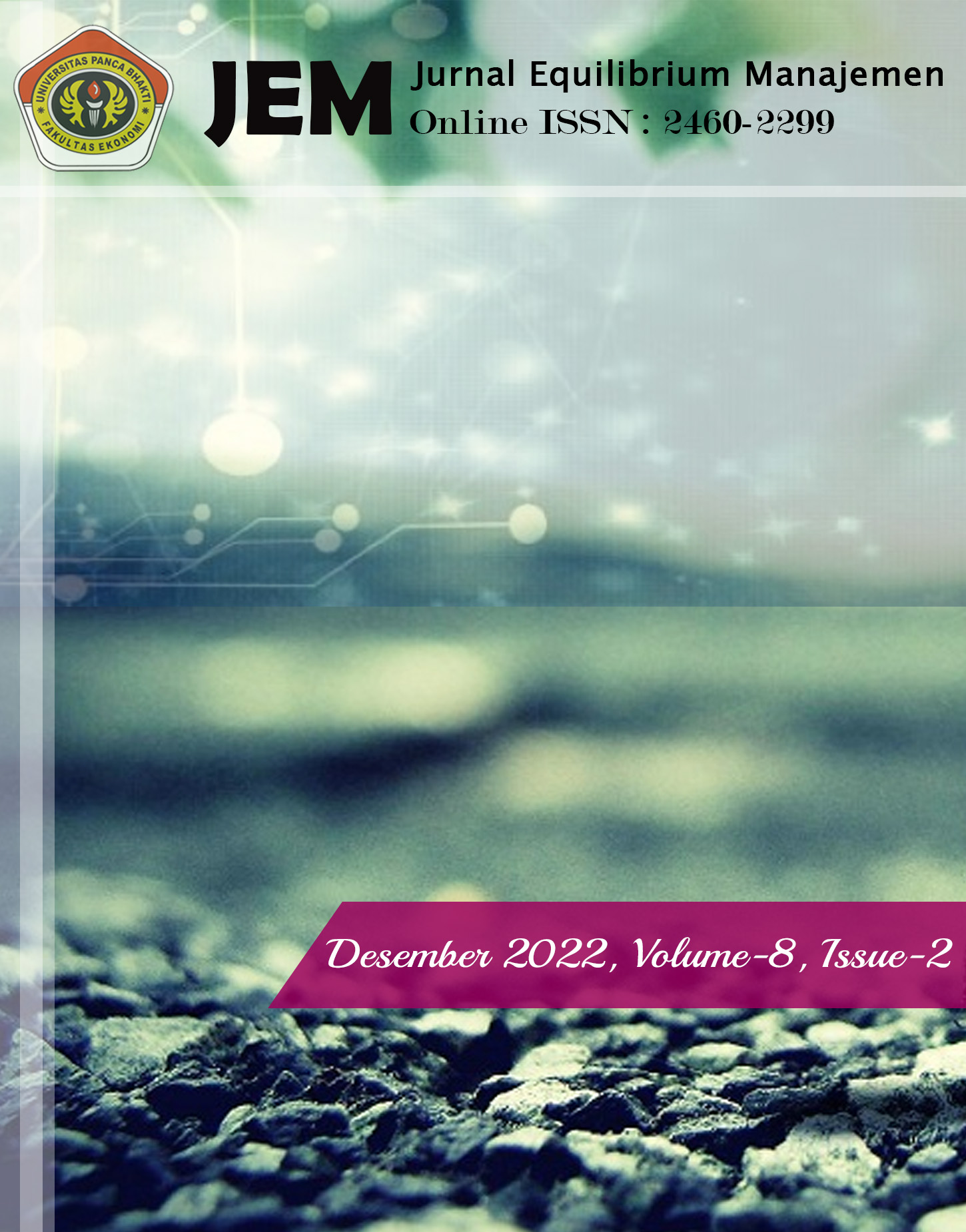USE OF THE HUFF GRAVITY MODEL TO ESTIMATE INTENTION TO VISIT A SHOPPING CENTER
Main Article Content
Abstract
The Huff's Gravity Model is known for its function as a determinant of location that relies
on the attractiveness of the location resulting from a comparison between the attributes of that
location with the obstacles that must be traversed to reach that location. The attractiveness of a
location is assessed from the attributes possessed by that location, while the obstacles that must
be passed are the distance and the time taken by someone to reach a certain location. This study
uses the Huff's Gravity Model to estimate attractiveness, intention, and frequency of visits to
shopping centers by using two types of data on aspects of servants, namely actual (objective) data
and perceived data (subjective). Furthermore, the results of the study were analyzed using the
principle of equivalence reliability to see results between actual data and perceived data, and apply
criteria on-related validity to see the results between the calculation of the Huff's Gravity Model
with measurements of attractiveness, intention to visit again, and frequency of visits to shopping
centers
Article Details

This work is licensed under a Creative Commons Attribution-NonCommercial 4.0 International License.
Copyright (c) 2021 Jurnal Equalibrium

This work is licensed under a Creative Commons Attribution-NonCommercial 4.0 International License.
Jurnal Equalibrium is licensed under a Creative Commons Attribution-NonCommercial 4.0 International License.
References
Anselmsson, J. (2016). Effects of shopping centre re-investments and improvements on sales and
visit growth. Journal of Retailing and Consumer Services, 32, 139-150.
Blumberg, B., Cooper, D., & Schindler, P. (2014). EBOOK: Business Research Methods.
McGraw Hill.
Huff. D. L., & Black, W. C. (1997). The Huff model in retrospect. Applied Geographic studies,
(2), 83-93.
Huff, D. L. (1964). Defining and estimating a trading area. Journal of marketing, 28(3), 34-38.
Leslie, J., Macia, M. G., Luli, S., Worrell, J. C., Reilly, W. J., Paish, H. L & Oakley, F. (2020).cRel orchestrates energy-dependent epithelial and macrophage reprogramming in fibrosis.
Nature metabolism, 2(11), 1350-1367.
Lilien, G. L., Kotler, P., & Moorthy, K. S. (1992). Marketing models prentice-hall. Englewood
Cliffs, NJ.
Mutya Paramita Pratita. (2019). “Pengunaan Model Gravitas Huff Untuk Mengestimasi Daya
Tarik, Niat, dan Frekuensi Berkunjung Ke Pusat Pembelanjaan” dalam Tesis. 23, 1-96.
Reilly, W. J. (1931). The Law of Retail Gravitation. New York: Wilihm J. Reilly Co.
Shafiee & Es-Haghi. (2017). Mall image, shopping well-being and mall loyalty.
Singh & Prashar. (2013). Factor defining shopping experience: an analytical study of Dubai.
Konishi, H., & Sandfort, M. T. (2003). Anchor stores. Journal of Urban Economics, 53(3), 413-
Biswas, A., Pullig, C., Yagci, M. I., & Dean, D. H. (2002). Consumer evaluation of low price
guarantees: the moderating role of reference price and store image. Journal of Consumer
Psychology, 12(2), 107-118.
Chebat, J. C., Sirgy, M. J., & Grzeskowiak, S. (2010). How can shopping mall management best
capture mall image?. Journal of business Research, 63(7), 735-740.
Kushwaha, T., Ubeja, S., & Chatterjee, A. S. (2017). Factors influencing selection of shopping
malls: an exploratory study of consumer perception. Vision, 21(3), 274-283.
Jacobsen, J. P., & Kooreman, P. (2005). Timing constraints and the allocation of time: The effects
of changing shopping hours regulations in The Netherlands. European Economic Review,
(1), 9-27.
Wu, C. S., Wu, K. Y., Lo, Y. R., Huang, Y. W., Tsai, Y. T., Li, Y., & Tsai, H. J. (2018).
Psychotropic use and risk of stroke among patients with bipolar disorders: 10-year
nationwide population based study. Journal of Affective Disorders, 226, 77-84.
Mild, A., & Reutterer, T. (2003). An improved collaborative filtering approach for predicting
cross-category purchases based on binary market basket data. Journal of Retailing and
consumer Services, 10(3), 123-133.
Larsen, V., Shelton, R., & Wright, N. D. (2015). Shopping center attitudes: an empirical test of
predictive attributes. Academy of Marketing Studies Journal, 19(2), 93.
Baker, J., Parasuraman, A., Grewal, D., & Voss, G. B. (2002). The influence of multiple store
environment cues on perceived merchandise value and patronage intentions. Journal of
marketing, 66(2), 120-141.
Mehrabian, A., & Russell, J. A. (1974). An approach to environmental psychology. the MIT
Press

